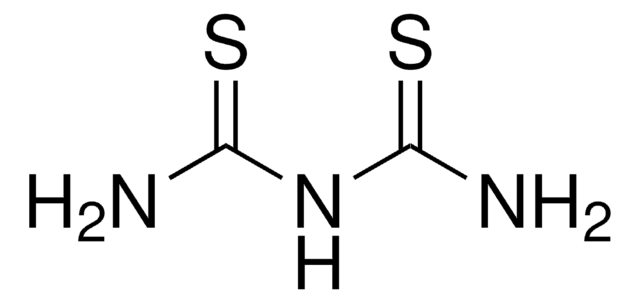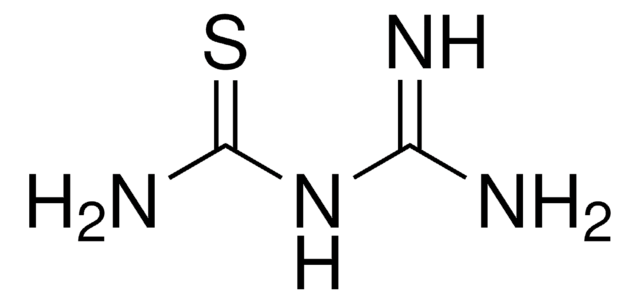D4139
N,N-Dimethyl-p-phenylenediamine dihydrochloride
≥99.0% purity (titration), powder
Synonyme(s) :
4-Amino-N,N-dimethylaniline dihydrochloride, DMPD · 2HCl, DMPPDA · 2HCl
Sélectionner une taille de conditionnement
67,00 €
Sélectionner une taille de conditionnement
About This Item
67,00 €
Produits recommandés
Nom du produit
N,N-Dimethyl-p-phenylenediamine dihydrochloride, suitable for peroxidase test, ≥99.0% (titration)
Niveau de qualité
Essai
≥99.0% (titration)
Forme
powder
Technique(s)
titration: suitable
Couleur
white to light pink, and tan
Pf
222 °C (dec.) (lit.)
Solubilité
water: 50 mg/mL, clear
Adéquation
suitable for peroxidase test
Application(s)
diagnostic assay manufacturing
hematology
histology
Température de stockage
room temp
Chaîne SMILES
Cl[H].Cl[H].CN(C)c1ccc(N)cc1
InChI
1S/C8H12N2.2ClH/c1-10(2)8-5-3-7(9)4-6-8;;/h3-6H,9H2,1-2H3;2*1H
Clé InChI
IAEDWDXMFDKWFU-UHFFFAOYSA-N
Vous recherchez des produits similaires ? Visite Guide de comparaison des produits
Application
Actions biochimiques/physiologiques
Attention
Mention d'avertissement
Danger
Mentions de danger
Conseils de prudence
Classification des risques
Acute Tox. 3 Dermal - Acute Tox. 3 Inhalation - Acute Tox. 3 Oral
Code de la classe de stockage
6.1C - Combustible acute toxic Cat.3 / toxic compounds or compounds which causing chronic effects
Classe de danger pour l'eau (WGK)
WGK 3
Équipement de protection individuelle
Eyeshields, Faceshields, Gloves, type P2 (EN 143) respirator cartridges
Faites votre choix parmi les versions les plus récentes :
Déjà en possession de ce produit ?
Retrouvez la documentation relative aux produits que vous avez récemment achetés dans la Bibliothèque de documents.
Les clients ont également consulté
Active Filters
Notre équipe de scientifiques dispose d'une expérience dans tous les secteurs de la recherche, notamment en sciences de la vie, science des matériaux, synthèse chimique, chromatographie, analyse et dans de nombreux autres domaines..
Contacter notre Service technique











